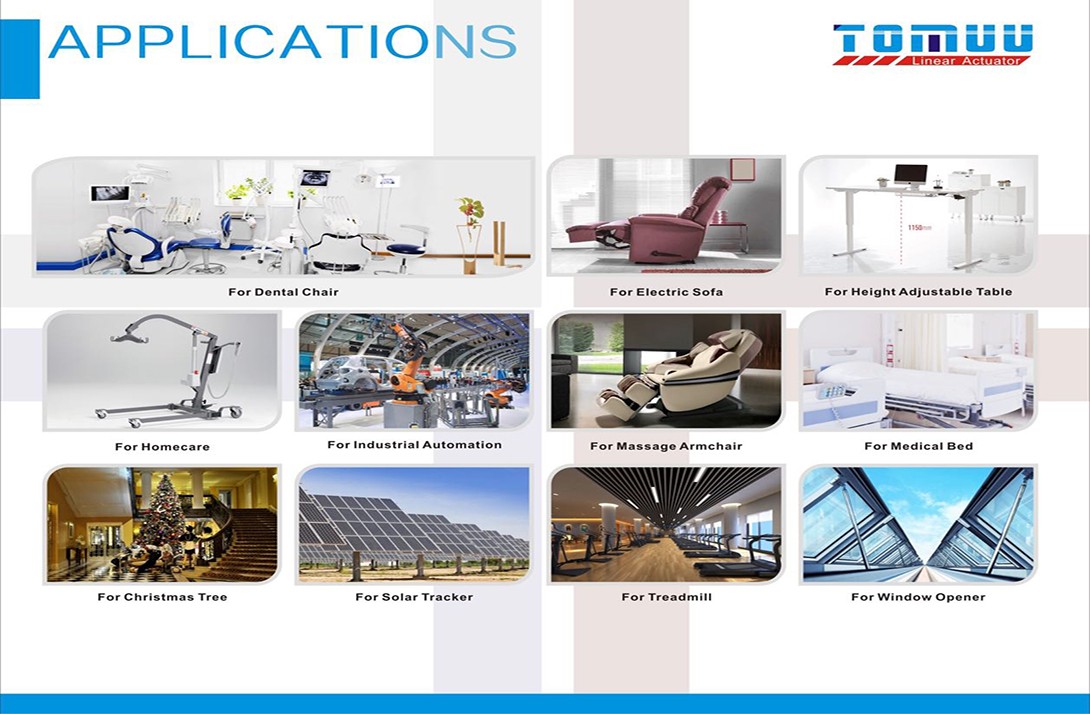SELECTING A LINEAR ACTUATOR
As we have seen already, actuators have myriad applications in different fields. But this doesn’t mean that all actuators are made equal. When purchasing an actuator, you should be able to know which suits your requirements best. Here is a comprehensive guide on how to choose the right actuator for your needs.
Step 1. Assess the movement required:
Does the object you need to move in your project require linear or rotary movement? Linear actuators are useful in exerting a mechanical force that would move an object in a straight line while rotary actuators, as the name suggests, generate circular motion.
Step 2: Consider the energy input:
Electrical actuators are becoming more and more popular due to their increasing sophistication and flexibility in handling various kinds of operations. But that doesn’t mean it's suited for every work out there. Consider hydraulic or pneumatic actuators if your work does not include electrical voltage input.
Step 3: Assess the precision level required:
Some actuators are ideal for heavy-duty work in rough environments, but they may not work well when it comes to handling smaller work like packaging which requires precision and the ability to repeat the same action hundreds or thousands of times.
Step 4 : Find out how much force you need:
The purpose of an actuator is to move or lift an object. Find out, in your case, how much this object weighs. The load capacity of an actuator decides how much it can lift, and although many actuators may look similar, their load capacity will vary. Before you buy an actuator, make sure the weight of your object matches the capacity of the actuator.

how to choose linear actuator
Step 5: Find out how far you need the object moved:
Distance, or stroke length as it is technically known, matters here. The stroke length decides how far your object can be moved. Manufacturers often sell actuators of varying stroke length.
Step 6: How fast do you want the movement to be:
The speed of the actuator is often an important factor for most people, depending on their project. Usually, projects that require actuators to exert high force would move slower than those that generate low force. Speed of an actuator is measured in distance per second.
Step 7: Consider the operating environment:
Does the actuator need to work in a rugged or rough environment, where dust or humidity is a concern? If this is the case, you would want to choose a product with higher protection rating.
Step 8: Decide on the mounting style:
Actuators in the market come in different mounting styles and understanding their benefits is necessary before buying an actuator. For instance, a dual-pivot mounting method in a linear electric actuator allows the device to pivot on both sides while extending and retracting. With this, the application gets to have two free pivot points while moving on a fixed path.
Conversely, stationary mounting, which secures the actuator to an object along the shaft, is useful for actions such as pushing a button. At this stage, you should be able to narrow down your options to a significantly smaller pool from where you started. From here, you will need to narrow down further. For instance, linear actuators come in different styles for different kinds of functions. Rod-style, for instance, is the most common and simple among them, with a shaft that expands and retracts. Track style, which does not change its overall length or size during operations are more suited when space constraints are an issue. There are also column lifts and other actuators that would be ideal for setting up TV and table lifts. Factors such as operating voltage and motor type may also be worth considering.